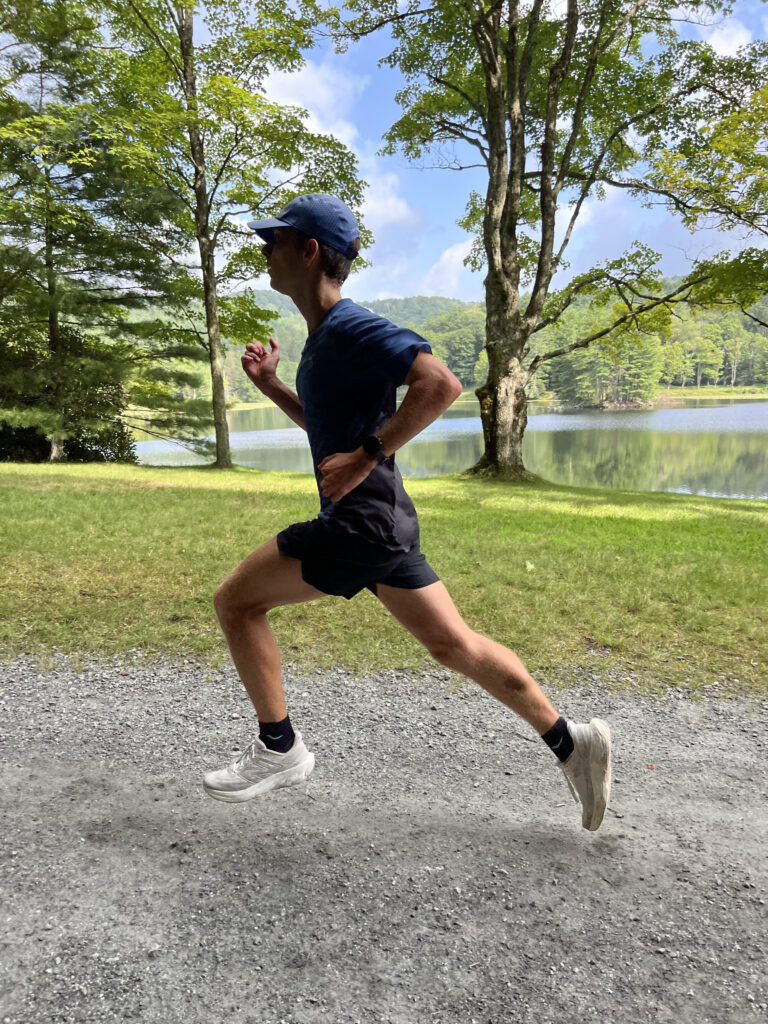We all know we should run hills. We understand they help us get stronger and faster. And despite this knowledge, hill running is one of the most underutilized tools to facilitate proper running form. Hills provide a number of benefits which you can read more about in depth here. However, this article is focused specifically on how hill running builds proper running form.
#1 Increased Muscle Fiber Recruitment
One of the ways running uphill cultivates proper running form is through increased muscle recruitment. Increasing muscle fiber recruitment simply means using more of your muscles to do the work. We are never using 100% of our muscle fibers for anything. (The exception may be those improbable stories of people lifting cars to save someone.) Regardless, the more muscle fibers that get recruited for running the more efficient we become.
If you watch someone running quickly they often look more efficient than while running slowly. This isn’t an optical illusion. When you run fast your body uses more muscle fibers. This results in less time spent on the ground and more power generated by each stride. And as a result, people tend to move more efficiently when they’re running faster.
This enhanced muscle fiber recruitment is amplified when running uphill. With the added stress of running uphill your body increases muscle recruitment. Think of hill running as nature’s weight room for distance runners. The idea behind doing leg weights is to improve efficiency by increasing muscle strength and muscle fiber recruitment. This is the same concept with hill running. By ramping up the power demands on our body running against gravity, we force our body to become more powerful. This increase in power and overall strength improves our ability to run with proper running form.
#2 Proper Running Form & Posture

Running posture is a crucial component of proper running form. There are parts of running posture that require strength, some that require improved mobility, and some require conscious attention to cues. Hills are a good example of improved strength leading to improved posture. There are also parts of running posture that we can cue and reinforce through practice while running. Hills are a wonderful way to do this.
Running uphill naturally improves our body position. For example, it’s really hard to over stride uphill. (Over striding is when you land with your feet too far out in front of your hips.) When you’re running uphill you’re naturally more likely to land with your feet under neath your hips. You’re more likely to get your knees driving forward and your elbows driving backward. These are key elements for improving upper body and lower body mechanics. They are elements you can mentally focus on, and hill running helps accentuate those parts of our stride.
One thing that will improve your ability to get the most out of your hills is to keep your spine long and tall. You want to lean forward slightly, into the hill, from your ankles up without bending at the waist. Keep your eyes and head up, thinking about creating space between your vertebrae. Another important cue is to make strong contact with the ground, impacting it with good drive, and getting it off the ground quickly. These are all cues for proper running form that can be reinforced during uphill running.
#3 Reduce Ground Contact Time
Spending less time on the ground without shortening your stride means you can spend more time moving forward. Spending too much time on the ground is a sign you may be over striding – as referenced above. It can also mean you simply need to improve your power and strength. Uphill running is great for both.
Spending too much time on the ground is the equivalent of your spring not being wound tight enough. (In this analogy, your spring is your muscles and tendons.) When you land it’s taking too long for you to load your spring and explode into the next step. By running uphill you are forcing yourself to run more on your toes, strengthening that spring. As the spring gets stronger it can load more quickly. As it loads more quickly you land and get into your next step faster. This will have the feeling of being lighter on your feet and the effect of running more efficiently and quickly.
Implementation
There are a number of ways you can incorporate hills into your training to cultivate proper running form. The early stages of training program is a great time to improve efficiency with hills. In addition to finding a hilly run 1-2 times a week, finish 2 runs a week with 4-10 uphill strides. The strides should be 10-30 seconds in length. Take plenty of recovery between them, these aren’t intended to be strenuous. The focus is only to run relatively quickly with proper running form.
As training progresses, include hill running as part of other workouts. For example, hilly fartlek runs, uphill tempo runs, and longer hill repeats with a jog recovery. While hills serve an important purpose in training it is also important to do some running that is specific to your race as you get closer to race day. More of the workouts in final 10-12 weeks before a key race should be on flatter, race specific surfaces. But hill running can create a phenomenal platform on which to build that specific training.
Interested in Learning more about ZAP’s 1-on-1 Coaching Services? Click Here.